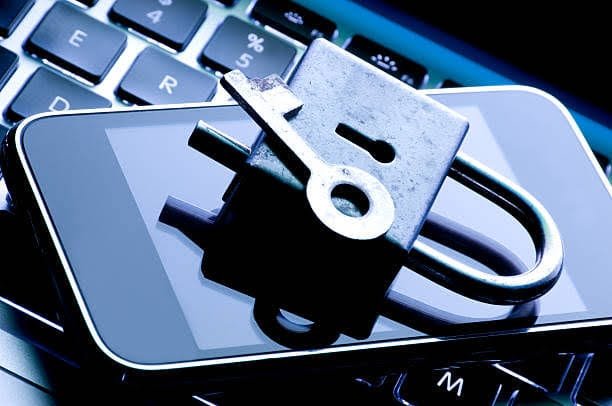Smartphones have also become an inseparable part of modern society and play a crucial role in our daily lives. We rely on them for communication, banking, shopping, social media, these make them attractive targets to hackers.
To avoid falling prey to these cyber threats though, there are standard protocols you should apply to your smartphone. Below are major measures that will assist in protecting the device from being attacked by malware, Phishing among other cyber threats:

Top 10 ways on How to Secure Your Smartphone from Cyber Threats
- Regular Software Updates
staying updated in terms of the operating system and apps is one of the measures that will go a long way in protecting your smartphone. Software updates are commonly those that contain patches that address such potential vulnerabilities that hackers might use.
Navigate to settings app on your phone, locate system updates and ensure that the auto download for both your phones operating system whether
Android or IOS and app updates are turned ON.
You can uninstall applications that not only have no active updates but also may be vulnerable to attack.
- Use Strong, Unique Passwords
Passwords can be used as the first layer of protection against cyber threats. It is essential to use passwords that cannot easily be guessed; it is best to combine letters, numbers and signs.
Do not use generic passwords like 123456; password; or 111111.
Password managers are also recommended to store your password along with generating single-use passwords to various applications.
Where available, turn on two-factor authentication to make your accounts somewhat harder to hack.
Read Also: Best Smart Home Devices for Seamless Automation in 2024
- Enable Biometric Security
Almost every modern smartphone has biometric security features, including fingerprint or face recognition that are more secure than passwords or PINs.
When the device is out of your sight or a stranger wants to use it, ensure that they provide fingerprints as a way of unlocking the phone and ensuring that they have not accessed the banking Apps, for instance.
- Install Trusted Security Apps
Antivirus software tools can help protect users in real-time against cyber threats, malware, phishing and other of attacks.
Select among detect mobile security applications like Norton, Kaspersky, Avast Mobile Security and others as these give services like anti-malware, anti-phishing and app scanner.
Beware of impostor security apps which are in reality a threat in their own right.
- Avoid Public Wi-Fi
Unintended open Wi-Fi networks, for instance, accessible at coffee shops or airports are frequently not secure, and cybercriminals could be waiting for the chance to snoop on your traffic.
Connect VPN to encode your data when working with the open access to the Internet from public places.
Never engage in asking for important details such as your username and password while connected to a public Wi-Fi as they are cyber threats.
- Limit App Permissions
Most apps require certain permissions on your smartphone such as permission to access your location, your contact list, the microphone and so on. Others may exploit these permissions to spoof credentials and steal data or monitor your activities.
Be also familiar with app permissions and try to turn off everything that may look suspicious.
Do not install applications with permissions not necessary for the proper working of the application.
- Beware of Phishing Scams
Phishing is basically a hoax in the form of an e-mail, text, or link leading to a fake site with the intent of getting you to share your information.
Don’t click on links shared in messages by unauthorized people. These may take you to the phishing websites or download malware into your phone.
For phishing attacks and cyber threats, you should watch for things like spelling mistakes, emails that look slightly unusual, or requests for personal details.
- Encrypt Your Data
Encryption distorts the information that is stored in your smartphone so it cannot be understandable with by hackers.
You should set your smartphone to use full-disk encryption so that your files are safe in the event that the smartphone is lost or stolen.
In addition to that, most modern smartphones have encryption features that are turned on by default, although one should always check the setting under the security category.
- Regularly Back Up Your Data
When a cyber attack strikes or a device malfunctions, having a recent backup means that you are safeguarding your crucial data.
Before giving your smartphone away make sure the data on the phone is backed up in a secure cloud automatically.
Make sure that backups are encrypted this way you minimize the risks of someone else accessing your data.
- Activate Remote Wipe
In case your phone is lost or stolen, the remote wipe feature will erase all information that can be used by an unauthorized person.
In Android phones, switch on Find My Device from Google and for iPhones, enable, Find My iPhone under iCloud settings.
This will enable its user to track if the phone is not reachable, lock all the functions if someone gains unauthorized access to your gadget, or wipe it clean altogether.



